The end of
|chaos.
The start of real control.
One front door for vendors, contracts, compliance, and insights.
Revyse is the AI-powered vendor management platform for multifamily teams ready to ditch the spreadsheets, endless email back-and-forths, and missed contract renewals for good.
All your sourcing, contracts, credentials, and spend in one place. Finally.

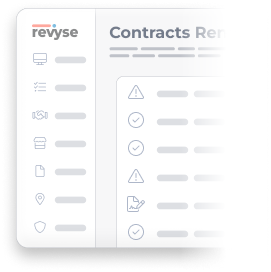
The Platform
See how Revyse brings clarity and control to vendor and contract chaos in minutes, not months.
The Marketplace
Get access to unbiased industry feedback and uncover the top-rated software and service providers.
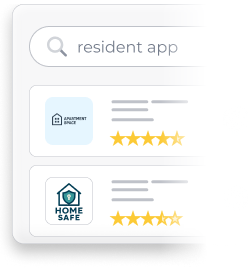

Discover top-rated multifamily vendors
Search by product, service, or category to find the right vendor fast. Read reviews, compare options, and make better buying decisions.

Top categories
Most Loved
Best Value
Best Value
Support Star
Support Star
Best Value
Best Value
Best Value
Best Value
From corporate to on-site, one platform powers it all.
Zero guesswork.
Built by former operators who were tired of wasting time on vendor management tools that didn’t fit the job. We lived the mess. Now we’re cleaning it up. 💪
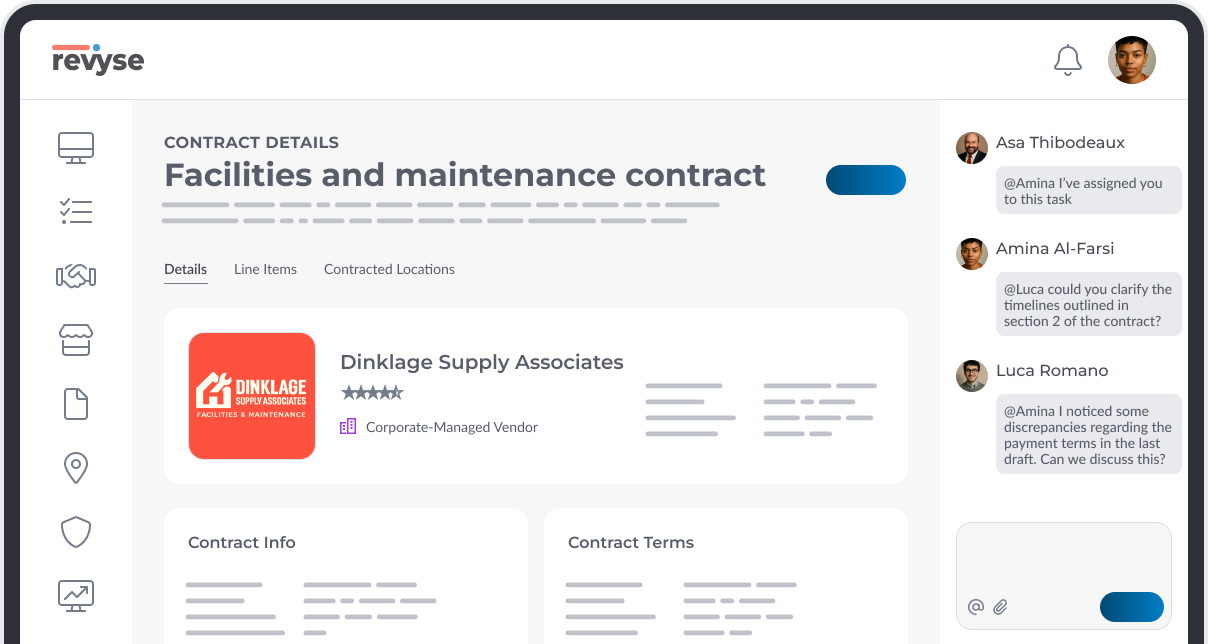
Platform Features
Platform Features
Find the right partner, every time.
- Stop guessing. Find the top-rated vendors and suppliers who meet your standards.
- Compare categories, services, and integrations to quickly understand fit without the sales pressure.
- Backed by real reviews and trusted by multifamily teams, Revyse puts you in control of sourcing.
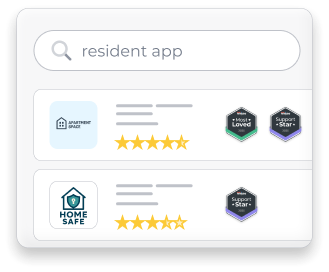
Let AI demystify your contracts.
- Revyse centralizes every agreement and turns it into data.
- Our AI pulls terms, pricing, renewals, and notice periods, while workflows manage templates, approvals, and countersigners, all in one seamless system.
- Bulk import existing contracts in minutes, and let Revyse automatically surface what’s missing—so nothing slips through the cracks.
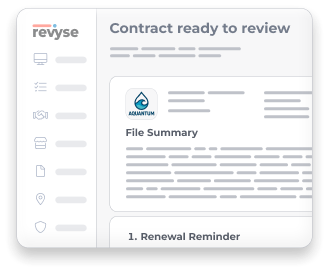
From landscapers to software, everyone’s credentialed.
- Revyse collects W-9 forms, verifies Tax IDs, and checks COIs against your insurance requirements based on the actual work being done, not just the vendor’s industry.
- Easily manage requests and maintain a clear record of authorized vendors, where and why.
- You get compliance without the chaos, and your vendors get a faster, friendlier experience they won’t hate.
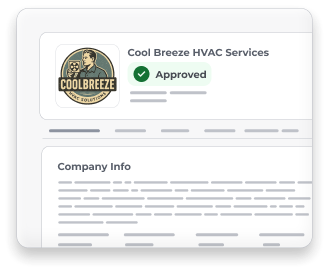
A clear line from contract to spend.
- Gain instant insights into your vendor spending across all properties, aligned with contracts and categorized for easy benchmarking. If you're still relying on spreadsheets, it's time to step up your game.
- Track what you're spending, flag where you're overpaying, and uncover opportunities to renegotiate. Revyse makes it easy to connect the dots between contract terms and real dollars.
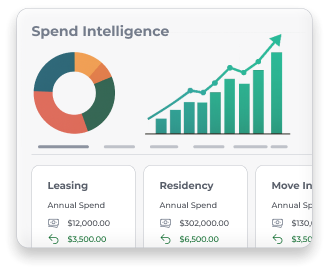
Find the right partner, every time.
- Stop guessing. Find the top-rated vendors and suppliers who meet your standards.
- Compare categories, services, and integrations to quickly understand fit without the sales pressure.
- Backed by real reviews and trusted by multifamily teams, Revyse puts you in control of sourcing.

Let AI demystify your contracts.
- Revyse centralizes every agreement and turns it into data.
- Our AI pulls terms, pricing, renewals, and notice periods, while workflows manage templates, approvals, and countersigners, all in one seamless system.
- Bulk import existing contracts in minutes, and let Revyse automatically surface what’s missing—so nothing slips through the cracks.

From landscapers to software, everyone’s credentialed.
- Revyse collects W-9 forms, verifies Tax IDs, and checks COIs against your insurance requirements based on the actual work being done, not just the vendor’s industry.
- Easily manage requests and maintain a clear record of authorized vendors, where and why.
- You get compliance without the chaos, and your vendors get a faster, friendlier experience they won’t hate.

A clear line from contract to spend.
- Gain instant insights into your vendor spending across all properties, aligned with contracts and categorized for easy benchmarking. If you're still relying on spreadsheets, it's time to step up your game.
- Track what you're spending, flag where you're overpaying, and uncover opportunities to renegotiate. Revyse makes it easy to connect the dots between contract terms and real dollars.

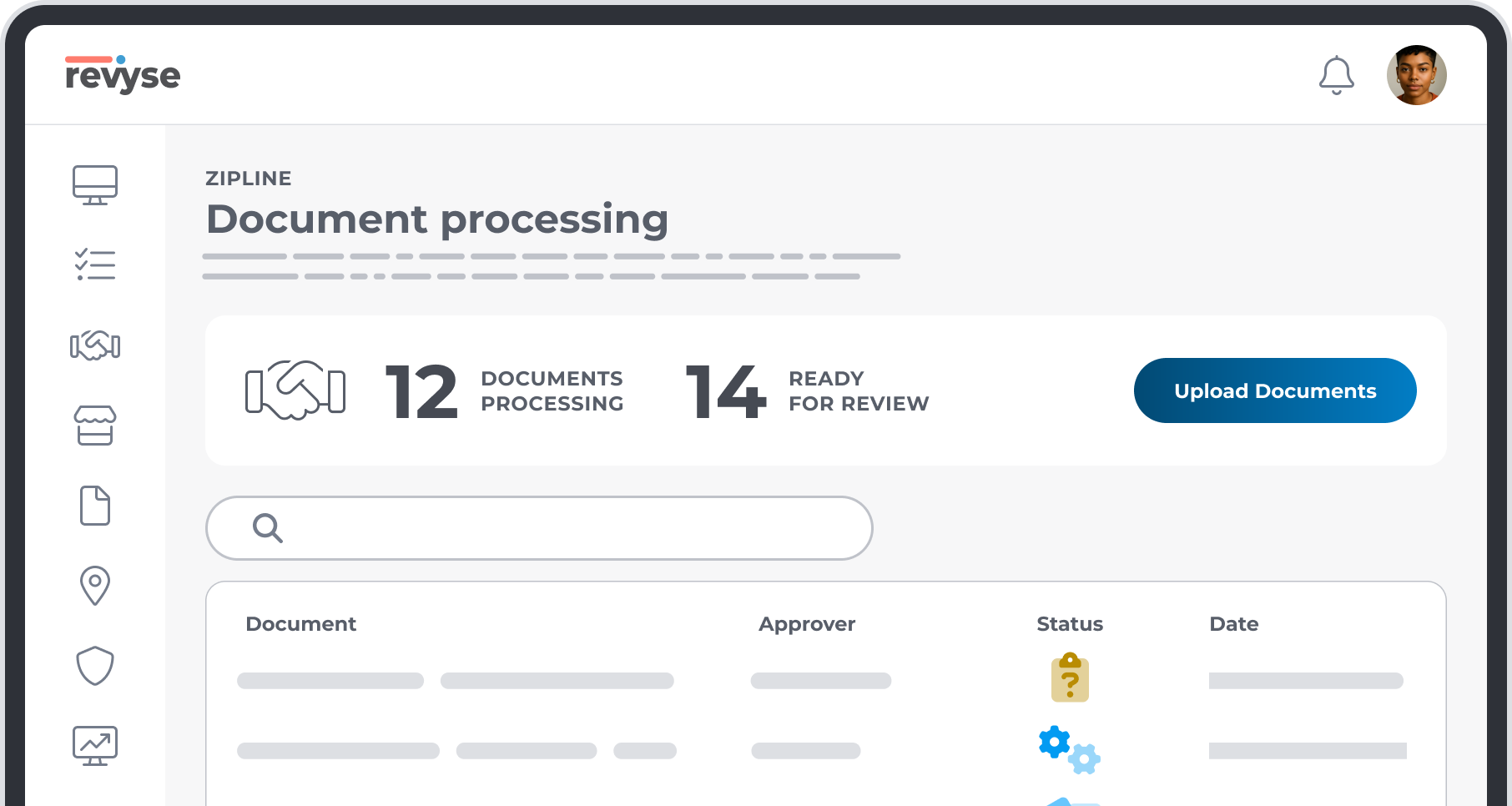
No hype.
This is AI with a purpose.
Revyse puts AI to work, extracting contract terms, tracking renewals, and surfacing spend insights, so you can stop reacting and start predicting.
The top multifamily operators use Revyse to calm the chaos of vendor management.
Join them


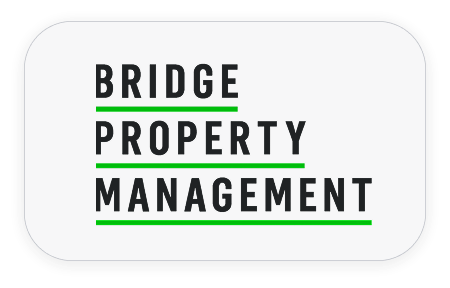


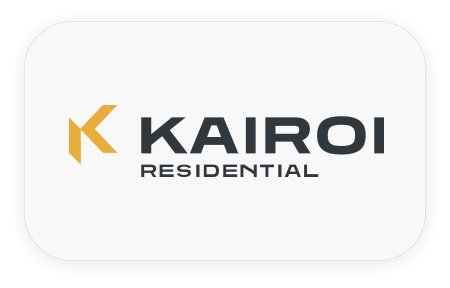
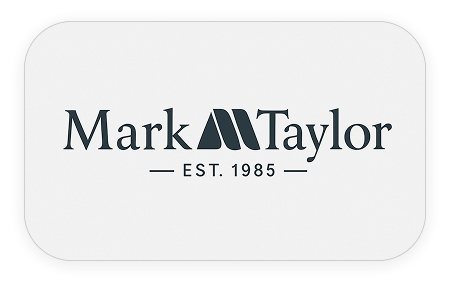
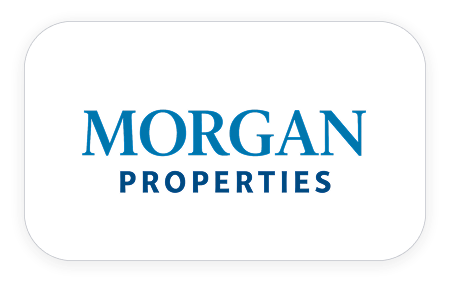
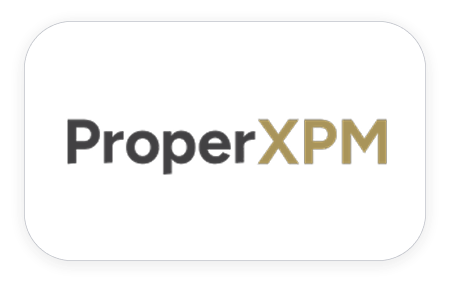
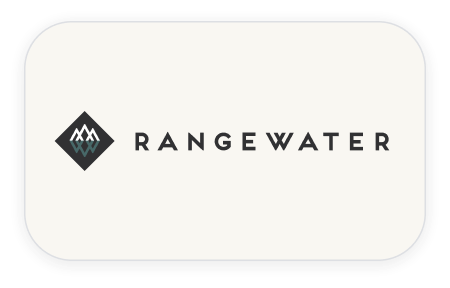
Fully qualified Yardi Interface Partner
Built to fit your workflow, not fight it.
Our standard interface keeps your data flowing and teams aligned.

Enterprise-ready from day one
Designed to scale across your entire portfolio.
Comprehensive user roles and permission controls, plus secure sign-in with Microsoft SSO.

SOC 2 Type II certified end to end
Because real risk management should start with your software.
All of your data is protected by enterprise-grade security protocols. No exceptions.
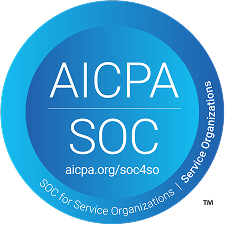
Team-wide visibility across your portfolio.
Every department gets the tools they need... minus the gaps between.
OPTECH
From the comfort of your couch
OPTECH 365, brought to you by Revyse and RETTC, takes the tradeshow experience you know and love and brings it straight to your screen. All year long. Via five category-specific, operator-led workshops. This is your all-access pass to multifamily problem-solving and innovation.
Latest Articles

5 months ago
Announcing the 2025 Revyse Best of Category Award Winners
It’s a BIG day here at Revyse. We’re thrilled to finally announce the winners of our 2025 Best of Category Awards. After analyzing thousands of eligible product listings and authentic, verified user reviews, we're celebrating the solutions that have genuinely impressed multifamily professionals across the industry. Every review considered in determining award winners was verified for authenticity, and users went out of their way to share honest, detailed experiences and insights with their peers. Winners earned their recognition purely through objective, data-driven calculations based on user ratings. This commitment to genuine, transparent feedback is a BIG deal in our industry, and it’s why these awards hold such meaningful weight. 🌟 The Awards 2025 winners have been recognized with three distinctive honors: Most Loved – Fan favorites earning consistently stellar ratings from users across the board. Best Value – Praised by users for delivering outstanding performance at an exceptional price. Support Star – Recognized by users for consistently providing exceptional customer support. 🎉 Meet the Winners Join us in congratulating these exceptional winners who have earned bragging rights (and more!) for 2025: Agency FIFTY3, ApartmentIQ, ApartmentRatings & SatisFacts, Apartments247, AppWork, Authentic, BC Solutions, Benson, BetterBot, Celeri, Dyverse, Effortless AI, Fetch, Flair, Get Covered, Grace Hill, Gryd, HelloData, HelloSpoke, iApartments, Impactful Apartment Marketing, LCP Media, Nurture Boss, PERQ, Preview 3D, Realync, Repli, Resi, SalesMail, Snappt, The View, TheGuarantors, Updater, VeriFast, Zego, and Zipcode Creative. Each winner now touts a badge on their Revyse product listing, showcasing their top-tier status and helping buyers quickly identify trusted solutions. 🥇 Why These Awards Matter In a fast-paced industry, decision-makers need quick, trustworthy insights to choose the best solution for their use case. Our Best of Category Awards aren't just accolades. They’re a direct reflection of genuine customer experiences. These badges simplify purchasing decisions by spotlighting solutions that consistently delight users. For vendors, these awards are validation from the toughest critics of all: your customers. With your award badge proudly displayed, you’re not just saying you're the best; your user community is saying it for you. 📣 Looking Ahead to 2026 Already eyeing next year’s awards? So are we! Vendors, now is the time to rally your customers and start gathering those reviews. Every positive user experience you deliver could put your solution front and center in next year's Best of Category Awards. 🚀 Celebrate and Explore Winners, take a bow. You’ve earned it. Keep an eye out as we amplify your achievements through newsletters, emails, and social shoutouts over the coming weeks. Buyers, curious about what makes these solutions stand out? Dive into our marketplace to see why these products earned their awards and approval from your peers. 👉 Explore the Award-Winning Products Now on Revyse Congratulations again to our incredible winners. And THANK YOU to every single user who submitted an honest review. Your feedback is invaluable. And here’s to another amazing year ahead. Team Revyse
Read post
6 months ago
From Cluttered Drives to Clarity: Kairoi’s Contract Win with Revyse
Kairoi teams up with Revyse to centralize their contracts and speed up operations with one smart platform. Before Revyse, Wayne Davis (Technology Project Manager) and Cecily Lard (Contract Administrator and Legal Operations Specialist) at Kairoi Residential had been managing contracts the way many multifamily teams do: across scattered drives, siloed systems, and with far too many moving parts. Now, they’ve worked to declutter the process, which has helped reduce friction between teams and enabled them to reclaim valuable time. Here’s how their day-to-day has shifted, and what it looks like operating with a single source of truth for contract management. 7:30 AM: Where’s the contract? Who’s got the latest version? Before Revyse Wayne starts the day trying to track down the statuses of contracts that have been submitted for review and approval, or identify ones that may be up for renewal or have now auto-renewed…and who needs to be tapped for which part of getting the contract locked down. “One of the difficulties is you have to make sure that everybody is touching it (the contract) correctly and everyone is doing their part,” Wayne explained. “Always eight or nine hands in the cookie jar.” Meanwhile, Cecily is juggling contract access requests. “We were housing all of our agreements in a drive,” she said. “Only myself and my team have that access.” Which meant: if Cecily’s out, the requests pile up. And approvals slow down. With Revyse Now? All Kairoi teams, from corporate to community, have the right level of access to pull the information and documentation they need directly in Revyse. Efficiency, transparency and governance. “I just wanted the ability to have one place that everyone could pull from,” Cecily said. “I want them to be able to go into the software and pull it themselves and not have to wait for me or Connie to send it over to them.” 10:00 AM: Transition notices, but without the traffic jam Before Revyse Wayne is helping teams organize disposition and termination tasks, working his magic, but spread thin trying to coordinate efforts across multiple departments. “You have your community directors, you have your marketing team, you have your regionals, you have your legal team,” Wayne said. “There’s so many people that are involved.” The result? Missed documents, missed emails, missed details, and ultimately, missed deadlines. With Revyse “One of the things that we find so easy with Revyse is the one-stop disposition notice,” Wayne shared. “Just having all of them in one place, and then with the click of a button, all notices are sent. So there's no confusion about, did this one get sent or did it not get sent, or who was doing it?” Revyse’s built-in disposition workflows saves Kairoi time and helps their reduction of manual errors by auto-generating termination notices to vendors with a single click. All relevant contract data and send notices are pulled, and audit logs are recorded for complete visibility. No herding necessary. 12:30 PM: Lunchtime + racing against approval bottlenecks Before Revyse Lunch breaks get interrupted by slow-moving approvals. Cecily and the legal team are bogged down reviewing low-risk contracts, which they know can slow the pace of business for onsite teams. But someone’s gotta do it. With Revyse Now, tiered approval workflows do the heavy lifting. “We had to make sure we got a good solution that was going to benefit us and save us on so much of the time piece, and become more efficient,” Wayne said. From high-priority contracts to more standard or routine agreements, every document can soon be routed to the right person for approval based on scope and/or value. This will help Kairoi’s legal team stay focused on more complex, higher value contracts, which will also help their onsite teams stay focused on the resident experience = moving faster without approval bottlenecks. 2:00 PM: Tech training and onboarding without the headache Before Revyse Wayne needs to roll out training for onsite teams, but showing people how to navigate shared drives and folders is a time sink…and changes with every personnel turnover. It’s always chaotic trying to adapt the level of training and access based on team or individual, which often leads to frustration or confusion on both sides. With Revyse Steph from Revyse is there to partner with Wayne every step of the way to ensure understanding and adoption of new processes and tech are met with ease versus resistance or stress. She leads real-time sessions directly in the Revyse platform, putting herself in the shoes of each role who needs to learn how to use it, then adapting accordingly. Plus, she’s available for ongoing support and Q&A through the channels that work best for Wayne and the rest of Kairoi’s team. “Steph has built great relationships with some of our community directors,” Wayne shared. “It’s been impactful for getting everyone comfortable and confident in the system.” Wayne has seen his fair share of implementations, but this one stands out. “I've had dozens of projects over the last five years, and I think, hands down, Steph’s been the most organized and this has been the best communicated project I've experienced at Kairoi.” 4:00 PM: What’s next? Expanding beyond contracts Before Revyse Contract sprawl wasn’t the only thing slowing down Kairoi’s operations. The team was managing other documents, like certificates of insurance for onsite vendors, in separate places. With Revyse “We found a solution that worked for the problem we have, and now we’re able to apply it to additional items that are going to make other teams even more efficient and effective at their jobs,” Wayne explained. Kairoi is already exploring how Revyse can smooth out more workflows, unlocking new benefits across the organization. The big picture: The right tool at the right time Kairoi’s story is all about solving real-world problems across teams – from legal to onsite operations. As a fast-growing company juggling shifting priorities, they needed more than just a repository. They needed tailored workflows. They needed security. They needed control. “We found competitors that had the contract renewal notifications and we found competitors that would have the repository for information and we found competitors that had the privacy and access,” Wayne said. “But we didn’t really find one that had all of that together in one solution.” Until now. What Revyse delivered for Kairoi: Centralized access for all teams from corporate to legal to community-level Fast, coordinated property transitions with automated notices Tiered workflows that will reduce bottlenecks and improve governance Hands-on onboarding and personalized support from the Revyse team A growing partnership that expands beyond contracts into broader vendor management needs As Cecily put it: “It’s just been an easy process and a good, good partnership.” Wayne’s take? “We’re really happy with the decision and we’re really glad we found y’all.” Ready to change how your team operates? Revyse can help you ditch the disjointed tools and scattered processes - just like Kairoi did. Total contract control, better risk management, and a smoother day in the life. 👀 Curious what your ‘after’ could look like? Let’s talk.
Read post
6 months ago
Revyse Expands AI-Powered Vendor Intelligence Platform, Adds Top Tech Talent to Drive Growth
With rising vendor costs and hidden financial risks, multifamily operators need better visibility. Revyse delivers. BEND, Ore. (March 19, 2025) – Multifamily operators allocate up to 25% of their operating budgets to vendor and supplier expenses, yet most lack a clear system for tracking costs, contracts, and compliance. Revyse, the AI-powered vendor intelligence platform built for multifamily, is solving this problem - eliminating blind spots, reducing financial risk, and turning vendor data into a strategic advantage. With new AI-driven intelligence tools and institutional partners like RangeWater Residential, Mark-Taylor, Morgan Properties, and Avanti Residential, Revyse is redefining how operators manage vendor contracts and relationships. Operators are losing money without realizing it. Contract sprawl is a challenge and expenses are rising, yet most operators still rely on outdated tracking methods - leading to missed savings, duplicate payments, and compliance failures. "Vendor costs are escalating, yet most operators have no way to proactively manage these agreements," said Bobbi Steward, Co-Founder and CEO of Revyse. "That’s not just an efficiency problem—it’s a financial risk. Revyse gives operators the intelligence they need to take back control." A single missed renewal or payment error can add up fast. One Revyse development partner uncovered $200 per unit in annual expense reductions just by centralizing supplier data, reducing vendor overlap, and automating oversight. Another found that 85% of their vendors had no formal contracts in place, exposing them to uncontrolled pricing and legal risk. Even routine audits can reveal costly mistakes. Steward shared one such moment from her own experience as a multifamily executive: "When our corporate credit card got stolen, we found that we’d been paying a vendor for services at a property we sold years ago," said Steward. "These issues happen all the time, and operators are leaving money on the table without realizing it." Revyse turns vendor oversight into a competitive advantage. The platform helps eliminate these risks by centralizing contract management, compliance tracking, and vendor performance data into a single AI-powered system. Contract Oversight – Create, track, and store agreements in a single system of record. Approval & eSign Workflows – Automate routing, approvals, and digital signatures. Vendor Compliance – Collect credentials and track insurance expirations. "Revyse has completely transformed contract management at Avanti," said Gloria Peak, VP of Revenue, IT and Compliance at Avanti Residential. "We now have a single front door for all contracts, and automated workflows ensure we’re managing both spend and compliance with a critical eye." Top tech talent joins Revyse to fuel expansion. To accelerate its platform growth, Revyse has recruited two leading technology executives: Mindy Taylor, Head of Product – A former global product leader at Airbnb, specializing in enterprise software for complex industries. Jonathan Samples, Chief Technology Officer – An AI and data engineering expert with deep experience in real estate technology. "Multifamily vendors and operators process billions in supplier transactions every year, yet much of that data is locked in PDFs and outdated systems," said Taylor. "Revyse is changing that. We’re turning vendor data into a strategic advantage, helping operators make smarter, faster financial decisions." Vendor costs are rising, and operators need better control. Repair and maintenance expenses alone jumped nearly 12% year-over-year in 2023, according to the National Apartment Association. "If we don’t know where our agreements are, let alone what’s in them, how are we managing these price increases?" said Steward. "Revyse is the competitive edge operators need. Those who master their vendor and supplier data today will have the upper hand tomorrow." With a total of $2 million in funding from multifamily veterans like RET Ventures and RealFoundations, and adoption by some of the largest institutional operators in the United States, Revyse is leading the next evolution of vendor intelligence in multifamily. About Revyse Revyse is the only AI-powered vendor intelligence platform built specifically for multifamily. By centralizing contracts, compliance, procurement, and spend tracking, Revyse eliminates blind spots, reduces risk, and helps operators make smarter, more profitable decisions. Visit revyse.com/rvi to learn more.
Read post
6 months ago
Revyse Contract Execution: Send, Sign, Store in One Secure System
Contract Execution expands the capabilities of Contract Management by enabling owners and operators the ability to take control of the contract from the get go. A Strong Vendor Relationship Starts with a Strong Contract Multifamily runs on relationships. From maintenance crews to security teams to software providers, vendors and suppliers help keep communities operating smoothly. And at the center of every one of those relationships? The contract. And it’s more than just paperwork. The contract sets expectations, protects both parties, and lays the groundwork for a long-term, successful partnership. But here’s the rub: contracts are often scattered across email threads, shared drives, and third-party tools. Excessive DocuSign license fees, anyone? And this means approvals stall, legal teams get bogged down reviewing low-risk agreements, contracts get buried, and renewal deadlines sneak up before anyone has a chance to renegotiate. Without a single source of truth, operators risk signing agreements without full visibility into financial commitments, vendor obligations, or business risks. That’s where Revyse Contract Execution comes in. Now available within Revyse’s intelligence platform, Contract Execution expands the capabilities of Contract Management by enabling owners and operators the ability to take control of the contract from the get go. This means creating their own contract templates, adding language from custom, pre-approved scope libraries, setting the signer and countersigner, then sending for e-signature all in the same platform. Revyse Contract Execution gives owners and operators complete oversight from day one, whether drafting or uploading agreements on their own paper or reviewing then executing vendor-provided contracts. Owners and operators can guarantee that every contract is properly reviewed, signed, and stored in one centralized platform. No more blind spots, no more bottlenecks, and no more third-party e-sign tools. Just a smarter, more controlled way to manage vendor agreements. Where Contract Execution Brings the Most Value1. Reduce Risk (and Cost!) with Governance at Every Step The problem: Contracts are often executed without the right level of oversight or are executed across multiple systems using various e-sign tools. The situation: Community managers sign agreements without corporate or legal review or are required to log into a third party e-sign platform to review and complete signature. This leads to potential compliance risks and unnecessary license fees. The solve: Revyse Contract Execution ensures that all agreements, whether initiated by an operator or uploaded to sign from a vendor, follow a structured approval process in the same place. Owners and operators can set approval thresholds based on their business requirements like spend, scope, or contract type, ensuring that every agreement gets the right level of review before being signed. It also provides owners and operators with a single system to handle the entire contract process, eliminating the need to pay for additional e-sign or storage tools. 2. Keep Business Moving Without Bottlenecks The problem: Legal teams are bogged down reviewing and redlining every contract…even when they don’t need to. The situation: Legal teams are often stretched thin, spending time reviewing low-risk contracts instead of focusing on high-value negotiations. According to one Revyse customer, this can mean reviewing upwards of 60 contracts per month regardless of their complexity, which can create bottlenecks at the property level. These slower contract approvals can then delay vendor services, which may negatively impact operations and ultimately, the resident experience. The solve: By establishing tiered approval workflows, Revyse routes agreements through the appropriate channels. Small, low-risk contracts can move forward more quickly, while larger, more complex agreements automatically escalate to the right approvers, keeping business moving without unnecessary delays. 3. Get the Job Done AND the Contract Signed on the Go The problem: Property-level service requests are often last minute or reactive, which can mean certain safety or compliance checks are missed. Like getting a contract signed. The situation: Community managers are pulled in a million directions on any given day…that when a toilet overflows or the snow removal service cancels at the last minute, it can leave owners and operators rushed or desperate to get a job completed. And guess what that means? Getting an agreement signed and approved by both parties can be an afterthought (or missed altogether), putting owners and operators at risk in the event something goes wrong. The solve: Revyse is mobile-friendly with SSO for owners, operators and vendors, and with drag and drop functionality. This makes it super easy for your plumber or handyman and community manager to upload, sign, then store an agreement from anywhere on site, from their phones, all while keeping the document secure in a single source of truth. 4. Centralize Contract Tracking for Full Visibility The problem: Contracts move through multiple hands, across various systems, then stored all over the place. The situation: Community managers, regional directors, corporate legal and compliance teams, and vendors all touch contracts. Without a centralized system to house the entire contract lifecycle, it’s nearly impossible to track who made changes and when, where approvals stand, or whether the latest version is signed and stored correctly. The solve: Every contract, whether initiated by an operator or uploaded from a vendor, flows through the Revyse platform, where every edit, comment, approval, and signature is tracked. Operators can track status in real-time, ensuring no document gets lost in an inbox or stuck in a forgotten folder. How It WorksWorkflow 1: Operators Initiate Contracts For agreements where owners and operators want to create the contract and terms from start to finish, Revyse enables the ability to: Create pre-approved contract templates with standard clauses to ensure consistency Initiate agreements with built-in controls based on vendor type, spend, or scope Send contracts to vendors for review and e-signature through a structured approval process Track and store executed contracts automatically in the vendor’s profile Workflow 2: Operators Upload Contracts For agreements where owners and operators need to upload their own custom contract or a vendor contract, Revyse makes it easy to still guarantee contract oversight by enabling: Community or corporate level team members to upload contracts and documentation directly into Revyse platform for execution Route agreements with built-in controls based on vendor type, spend, or scope Send contracts to vendors for review and e-signature through a structured approval process Track and store executed contracts automatically in the vendor’s profile In both scenarios, Revyse gives owners and operators the tools needed to guarantee complete transparency and oversight in that every contract follows the right approval process, captures the right signatures for the right type and level of contract. This both minimizes compliance risks and keeps business moving. All in one place. Use Cases and BenefitsEnsure Governance While Keeping Legal Focused on High-Value Contracts Make sure every contract gets the right level of review with tiered approval workflows. This enhancement will give owners and operators more control over the contract approval process. Soon, contracts above a certain value or have longer than 12 month terms could be automatically routed for legal review, while lower-value agreements follow a different approval path. This will help operators keep business moving without overloading their legal teams. Avoid Hidden Auto-Renewals and Untracked Commitments Ensure that all vendor and supplier agreements are properly reviewed and aligned with company standards by routing them through Revyse. This ensures corporate teams maintain full visibility into contract terms while supporting community teams with a more structured approval process. With the right levels of oversight in place, operators can confidently manage risk and financial commitments across every property. Standardize Vendor and Supplier Contracts Across a Portfolio Get control over those auto-renewals! By tracking contract expiration dates and renewal terms, owners and operators guarantee their agreements don’t auto-renew without review. Further, teams will get notified well before a renewal deadline with AI-driven alerts, allowing them to renegotiate terms or cancel unnecessary or duplicative services. What’s Next With the addition of Contract Execution, Revyse continues to provide a centralized place for managing all of your vendor data and all of your contracts and agreements, from start to finish. Operators can initiate or upload contracts, ensure proper approvals, track the full contract lifecycle, and keep all documentation in one place. The result? Complete oversight, lower risk, and better efficiency. And we’re not stopping. "Operators are looking for better ways to not only manage contracts, but to better control risk across their entire portfolio," says Mindy Taylor, Revyse’s Head of Product. "The next evolution of Revyse’s intelligence platform will focus on automated vendor compliance, giving operators deeper insights into vendor performance, insurance coverage, and overall risk exposure." Revyse is building an easier, smarter way to manage vendor relationships. Because a contract is just the beginning. Want to see it in action? Let’s talk.
Read post







